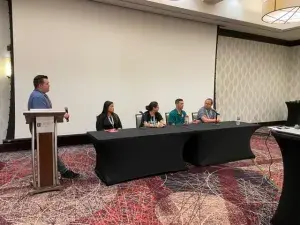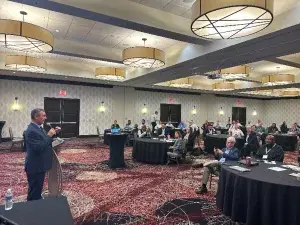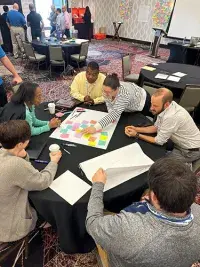
Last month, TSA hosted its second annual Lift Innovation Summit. The event provided training and resources to Lift Cell Innovation Officers and showcased the unique innovations coming out of the agency’s newest solution sourcing program.
The term ‘Lift Cells’ refers to the official groups throughout the agency working to provide TSA with the means to solve problems while building on TSA’s culture of innovation and entrepreneurship. Lift Cells are led by Innovation Officers and are supported by Innovation Coaches, and together they assist the workforce and advise on local innovation projects.
What started as a small group of inventive, curious TSA employees has since grown into a network of innovation experts. Lift Cells have identified more than 250 problems they are working on to make the frontline’s daily work better, faster and more efficient.
The summit brought together 65 Innovation Officers from around the country to Springfield, Virginia, for a week of learning and collaboration. The agenda showcased a different learning session each day from how to draft problem statements, design thinking and hands-on prototyping to how to submit innovations for patents through the DHS patent office. Attendees also heard success strategies from TSA’s top producing Lift Cells.
“The Lift Summit was amazing,” said Vanessa Couch, Innovation Program manager. “The energy throughout the event was nonstop. Everyone was engaged the whole week as they worked together through problems from their airports and offices.”
TSA Administrator David Pekoske kicked off the Lift Summit, underlying the importance of the Lift effort. He touched upon the role innovation plays in challenging and reshaping the agency as a whole and the importance of bottom-up innovation.
At the end of the week, the U.S. Air Force’s Sparks Cells, the Air Force’s version of Lift Cells and a model for TSA’s program, joined the event and shared their own stories of innovation and design thinking.
On the final day, TSA’s growing innovation community showcased their latest creations at Lift Off, a Shark Tank-style pitch where Innovation Officers promoted their airport’s Lift Cell solutions to a panel of TSA senior leaders.
Pitches involved products already in action, such as Mike Ellis and the Montana Lift Cell’s 3D printed devices which prevent baggage from snagging on the conveyor belt and includes their iterations of a Colorimetric caddy. Rob Allen from the Alabama Lift showcased a metal detector barrier created out of PVC pipes used to prevent security breaches at the checkpoint.
Other idea pitches included Jason Harper’s from Los Angeles International Airport Lift presented several iterations of a portable magnetic Notice of Inspection holder; Bobbi Schuh from the Wisconsin Lift using a recruitment card with a QR code for job announcements to make it easier for job seekers to navigate multiple websites for job openings; and Clinton Shrum from the Michigan Lift presenting 3D printed CT bin clips/identifiers.
Last year, the agency published the TSA Innovation Doctrine, further establishing and solidifying TSA’s innovation efforts. TSA’s Lift program is a grassroots effort led by Chief Innovation Officer Steven Parker.
Since publishing the doctrine in October 2022, the Lift network quickly grew from just five Lift Cells into a community of 56 Lift Cells, reaching 302 commercial airports and five TSA headquarters offices.
“The growth of our Lift Cells community over the last year has been remarkable and is arguably the fastest growing innovation ecosystem in the federal government,” said Parker. “This growth is a clear indication of the appetite of our workforce to have a say in shaping the agency and developing innovative solutions that help TSA remain agile and ahead of threats against our transportation systems.”
By Kimberlyn Pepe, Strategic Communications and Public Affairs


